The Corsair SP (Static Pressure), AF (High Airflow) 120/140mm Fan Review
by E. Fylladitakis on November 25, 2015 8:00 AM ESTCorsair's 120mm Performance
The AF120 Performance and AF120 Quiet Edition
First one up is the 'High Airflow' variant of the 120mm line (non-LED), which comes in Performance and Quiet modes. This is the Performance variant pressure/volume response at 12V and 7V:
Whereas the quiet model has this response - note the axes are the same for both AF120 models in this case.
While both AF120 fans in the graphs above share the same shape and design, with the only difference being their rotational speed, the performance curves are of similar shape but different magnitude. The performance of the AF120 fans is low when the impedance is very high but their volume flow capacity greatly increases when the airflow impedance falls below medium levels.
The SP120 Performance and Quiet Edition
As we move onto the Static Pressure line of fans, featuring fewer but wider fan blades (only 7 vs 11), the expectations lie in higher airflow in high-impedance (dense liquid cooler) scenarios. First up, the Performance model at 12V and 7V:
The Quiet model has reduced fan speeds, which gives a very different graph:
The performance of the SP120 is obviously much different than the AF120, as expected, but is also very different from the performance of the SP140 LED as well. The Performance Edition of the SP120 has an outrageous maximum speed of 2300 RPM and our instruments recorded an outstanding static pressure of 3.42 mmH2O at that speed. The curve declines sharply, with the SP120 displaying mediocre airflow gains as the airflow impedance decreases. It also has a significant stall area within the medium airflow impedance region.
The SP120 Perfomance and AF120 Performance Comparison
As the speed of the SP120 Performance Edition at 7 Volts and the maximum speed of the SP120 Quiet Edition coincide, it can be noticed that the two fans have an almost identical performance curve when operating at the same speed. This is natural as only the rotational speed of the fans differs, the design of the fan itself is identical. But when we compare the SP120 and AF120 variants to each other, we get the following (again, at 12V and 7V)
And in the Quiet versions (note, different axes):
The above two comparisons between the Performance and Quiet versions of the SP120 and AF120 respectively are somewhat unfair. From just a quick look at the graphs, it appears that the SP120 outperforms the AF120 under almost any conditions when both fans are operating at their maximum stock speeds. That however is not correct, as the SP120 versions have a much higher top speed are are in both cases louder. With both the AF120 and the SP120 running at the same speed (and similar noise profiles) we got the following performance curves.
With both fans running at the same speed, the advantages and disadvantages of each design become more apparent. The AF120 provides higher air volume flow in low airflow impedance setups while the SP120 can maintain higher air volume flow levels when the airflow impedance is high. Strangely, even though the SP120 is moving considerably less air while entirely unobstructed, it generates about the same level of noise as the AF120. We can only assume that the large blades of the SP120 generate a very turbulent air flow.


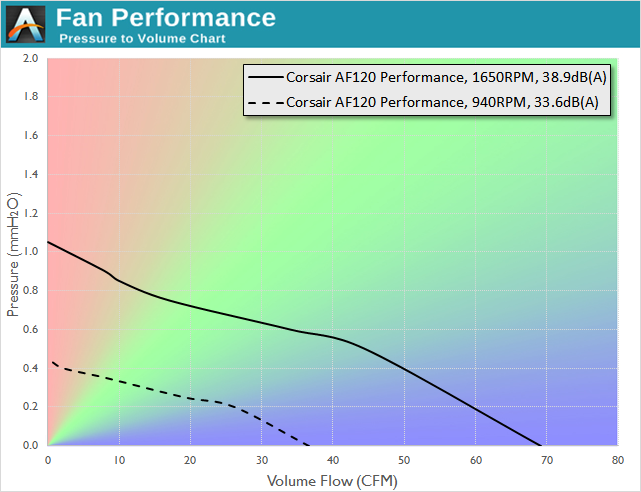
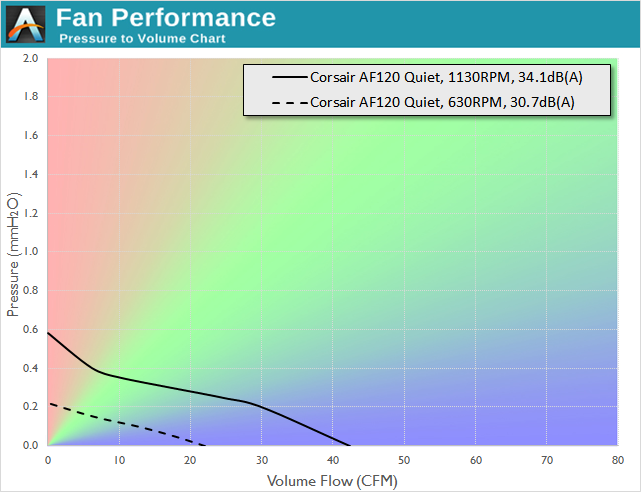
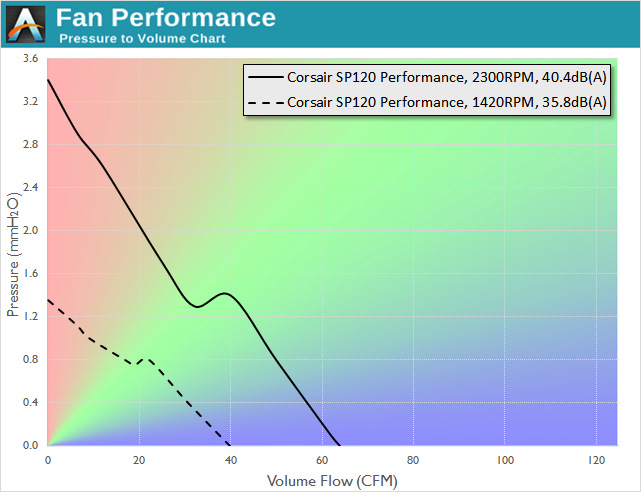
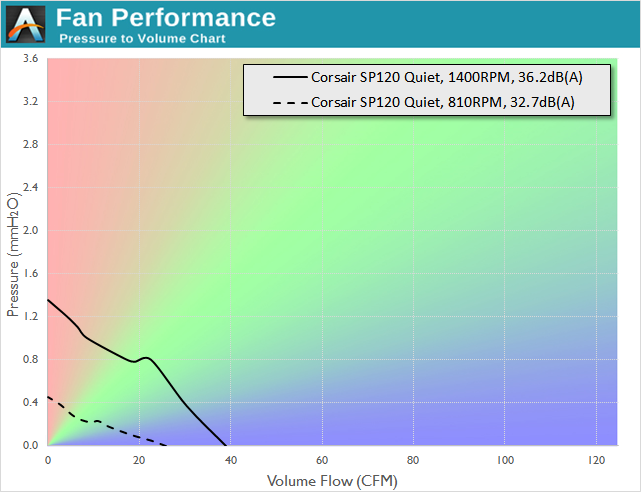

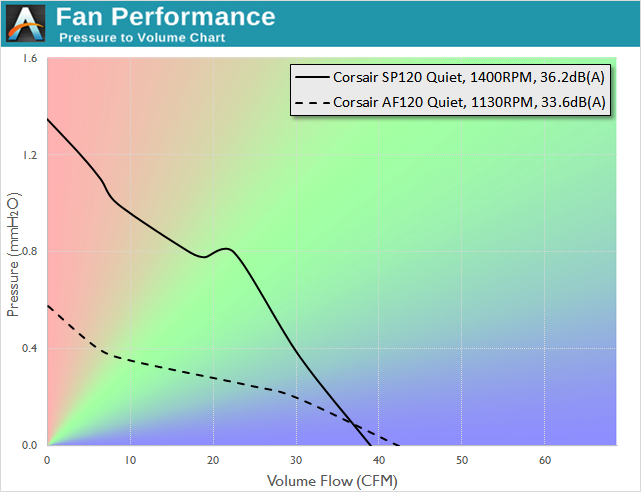
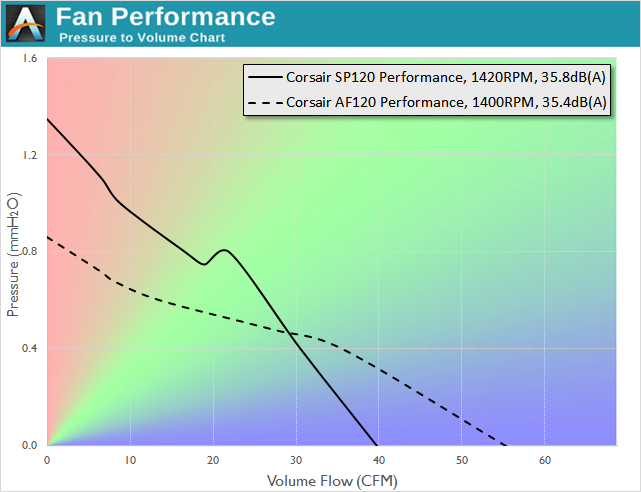








92 Comments
View All Comments
Folterknecht - Wednesday, November 25, 2015 - link
Where was the author rude in his reply? Direct maybe, rude no!And as far as I can see the author is from europe - maybe both of them misunderstood each other completly when it comes to the term for resistance/ impedance. I get the feeling that american and european schools/universities might be using different terms and methods to describe the same phenomenon, that wouldn't be first time (X-Rays vs "Röntgenstrahlung").
And in general europeans are a little bit more direct and you re lucky that the author isnt from germany, we re often even more direct ;-)
No reason to get all upset here imo.
ImSpartacus - Wednesday, November 25, 2015 - link
As a reader for many many years, I'm admittedly a mega-fanboy of Anandtech and I've previously paraded them around as being nigh-perfect compared to other tech blogs in many areas - including their writers' attitudes with readers (which is often lacking as technical-minded people can often be).It really comes down to no longer being able to say almost-absurd comments like, "I've never seen a comment even remotely rude/insulting from an Anandtech writer" in good conscience. I like to think that if I'm going to act like a shameless fanboy around others, I have to be more than justified in doing so. I just can't do that anymore.
I fully realize that I probably put Anandtech on an unrealistically high pedestal. They are good, but the site is ultimately run by human beings and that's probably ok.
Beany2013 - Thursday, November 26, 2015 - link
If you want to get offended on someone else's behalf, Tumblr is thataway --->Although in all seriousness, I think you must have read that comment from an *entirely* different perspective to me; I thought it was two people familiar with the science discussing their different interpretations of terminology in a fairly chilled out way. I mean, if you think someone has got something completely wrong and are trying to explain it the way you understand it, it's hard to *not* come across as passive aggressive, but I'm not getting that vibe at all.
Kutark - Thursday, November 26, 2015 - link
I'll just leave this here for you, since clearly you ran out...http://www.amazon.com/Playtex-Tampons-Multipack-Un...
Oxford Guy - Thursday, November 26, 2015 - link
Save the sexism for 4chan where it can, at least, pose as wit.Phreedom1 - Sunday, December 6, 2015 - link
He wasn't rude in anyway. Man you are thin skinned. So many people these days getting upset over little or nothing.KAlmquist - Wednesday, November 25, 2015 - link
According to the Wikipedia article you link, "mechanical impedance" is the ratio of force to velocity in response to a harmonic force. It's analogous to electrical impedance. It follows that your use of the term "impedance" is incorrect for two reasons. First, you are measuring a constant airflow, not one that alternates directions. For "impedance" to be relevant, you would need a force that alternates directions, which would generate an alternating air flow. Second, air resistance is not proportional to air velocity, so there is no fixed ratio between the two. To talk about "impedance," you need a linear system.Your second link does show that your usage is not unique. But your usage doesn't seem to be correct.
jann5s - Thursday, November 26, 2015 - link
+1ninjaquick - Wednesday, November 25, 2015 - link
Impedance is the capacity or nature of impeding. Which is to say prevent motion or flow or activity.Saying it is limited to Electrical Engineering is like saying Tomatoes are limited to Ketchup.
wolfemane - Wednesday, November 25, 2015 - link
Why... What... What else would they be used for?????